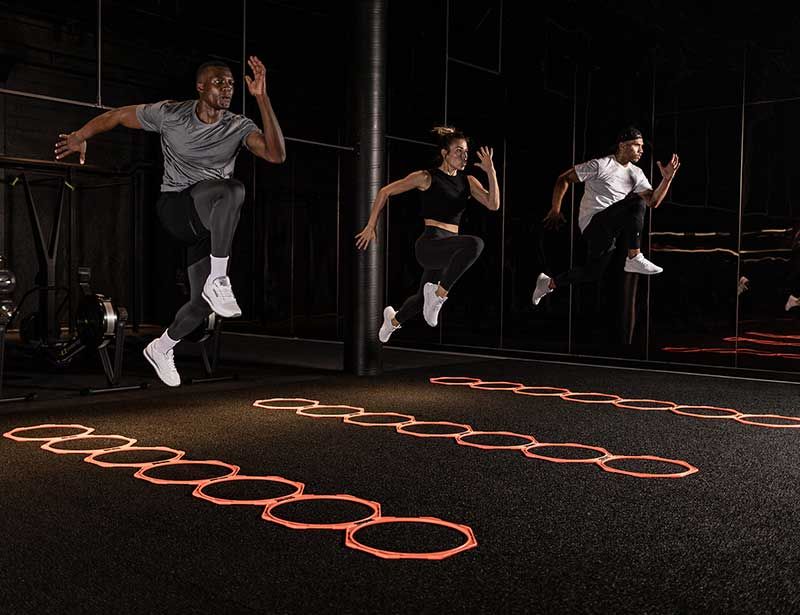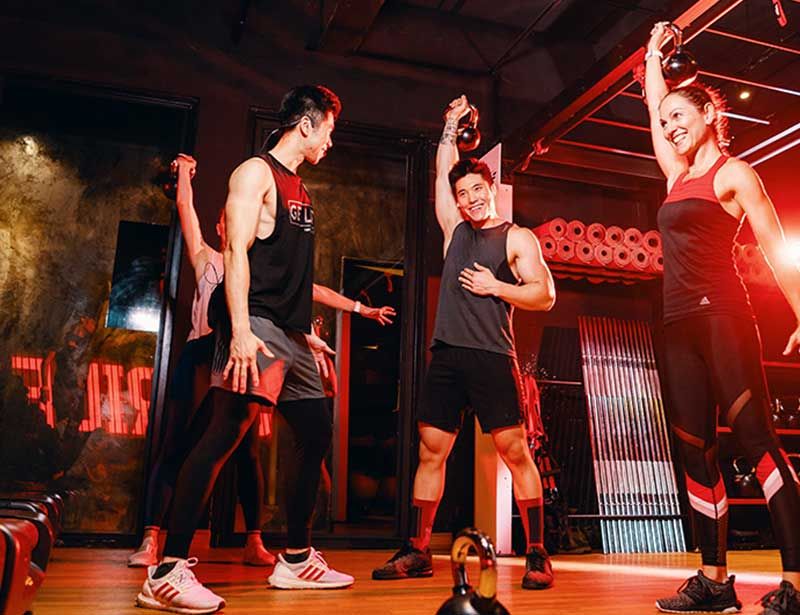Asia-Pacific
Ben Karoonkornsakul
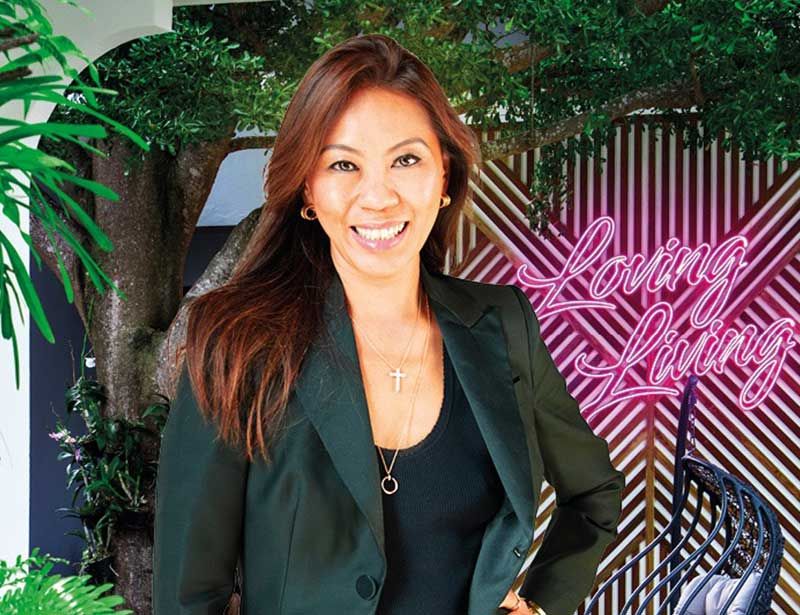
Editor’s note: Since this interview was conducted, Bangkok has entered its third lockdown.
You founded the Absolute brand 18 years ago. What was your vision?
As much as anything, it was a gut feeling. There were no boutique studios in Bangkok at that time – whenever I talked about it, people didn’t even know what I meant. But I had a vision of a studio that would be dedicated to, and particularly good at, a particular discipline.
When people like a particular form of exercise, they do it repeatedly. That’s how I was with yoga, but there were no good yoga studios anywhere in the city. So, I created one: a dedicated, purpose-built yoga studio that I, and the others like me who I imagined were out there, could enjoy. And that’s how it started. I just did what I knew I wanted, started small, worked to make that one space work and took it from there.
What has been your growth since then?
We now have 11 studios in Bangkok, with another one opening in July, and three in Singapore.
We’ve also branched out into other exercise disciplines over the years. No one form of exercise gives you everything you need, so we’ve added pilates and rhythm cycling too, as well as one-to-one functional training at a couple of our locations. We also have our FITFOOD brand, launched around seven years ago; no matter what exercise you do, you can’t escape the need for good nutrition. And then we have our resort, Absolute Sanctuary, which opened on Ko Samui around 13 years ago.
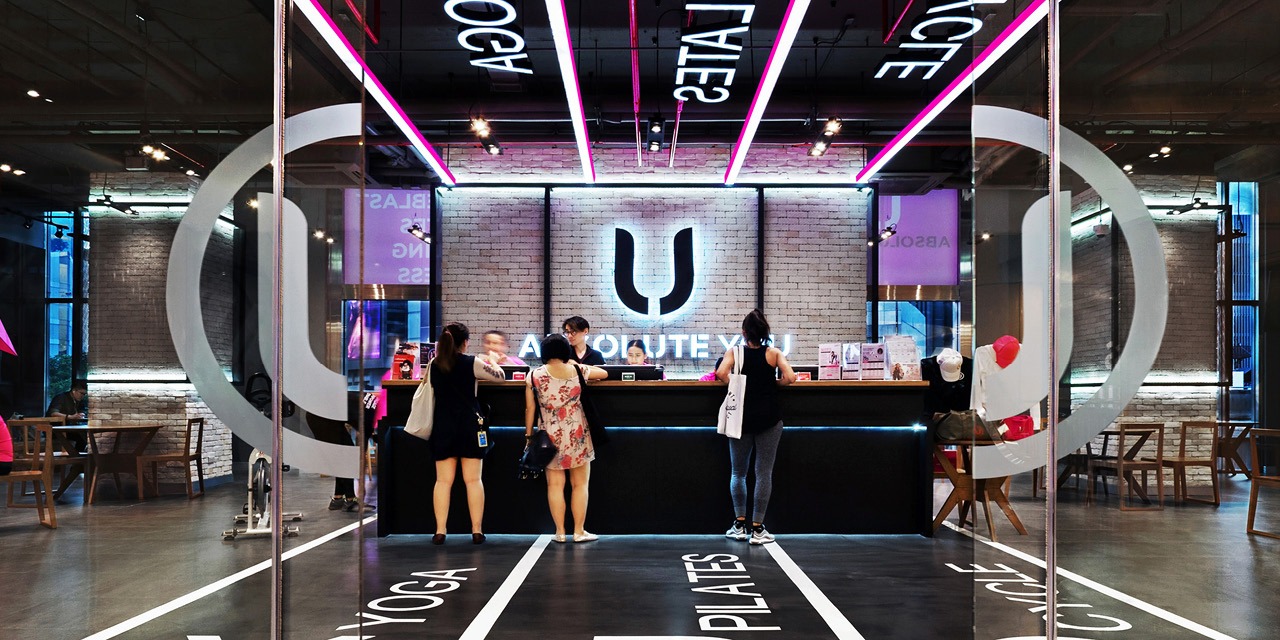
As a result of this expansion, we rebranded from Absolute Yoga to the Absolute Group four or five years ago, with the customer-facing studio brand changing to Absolute You.
My approach is always four-fold when expanding our offering. First, I pick the things I love to do myself. Second, I pick elements that complement each other and that are sustainable: exercise that’s functional and that supports health and a good quality of life in the long term. Third, I choose things that will have mass appeal over an extended period, not things that will be ‘out’ in a year’s time.
Fourth, very importantly, we don’t rush our expansion, only launching a new product roughly every six years: pilates launched around 11 years ago; cycling in 2015. It takes time to perfect a product and develop a really good instructor training system, and all that needs to be in place before you can successfully scale.
“In the boutique world, people are looking for specialists. You have to become known for one thing at a time” – BEN KAROONKORNSAKUL
Our four core disciplines are now yoga, rhythm cycling, reformer pilates classes and private one-to-one pilates; these private sessions have become particularly popular since COVID.
All disciplines are available at the majority of our locations, with yoga, cycling and pilates enjoying an equal weighting on the class timetable. There are just a couple of studios that don’t offer yoga, and that’s because there’s now more supply of this in the market. Rhythm cycling and reformer pilates are newer and scarcer.
Has rhythm cycling attracted a new audience?
Rhythm cycling participants can be a bit younger than in yoga and pilates: we get teenagers cycling with their mums, as well as a lot of 20-somethings who enjoy the fun and the music. But it attracts other groups for other reasons: workers who want to come in and get rid of the day’s stress, for example, and people in their 40s and 50s who know they need to do a bit of cardio but don’t want to hate the process!
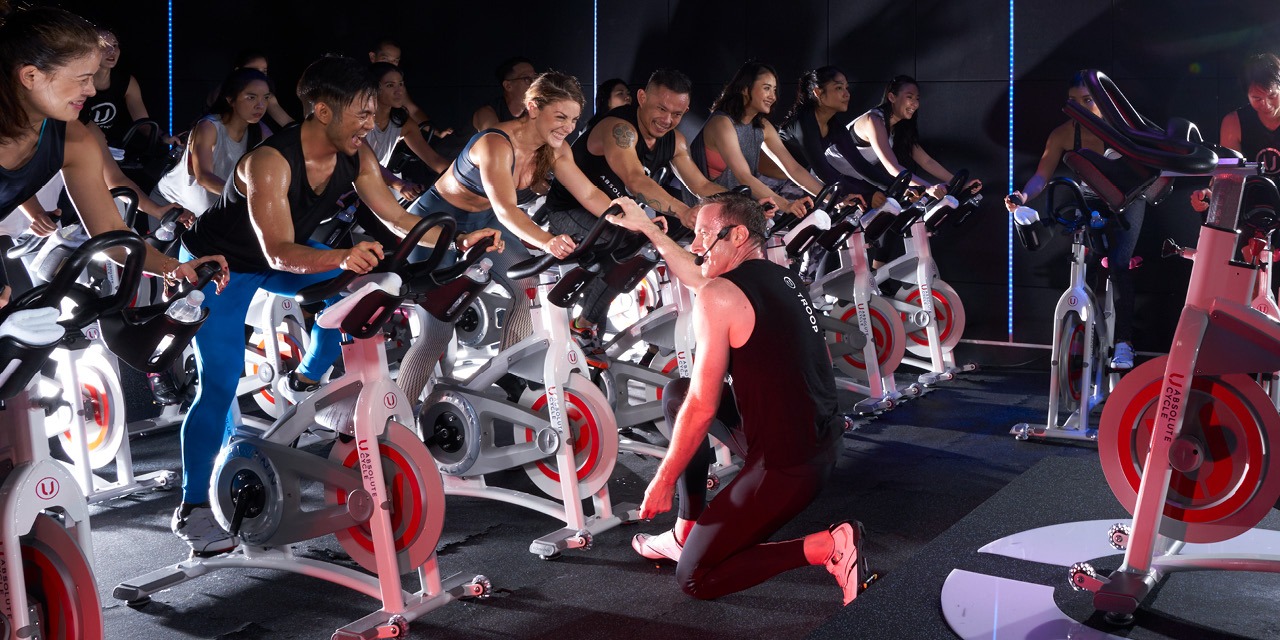
Because honestly, I’m 50 now, and people my age? A lot of us hate cardio! I have to talk to my members and say to them: “You may not think indoor cycling is for you, but you need it, so give it a try. It doesn’t have to be your favourite thing, and you don’t have to do it in the same way as the 20-year-old in the front row. But it’s only 45 minutes, you won’t get bored, and then you’ll have done your cardio!”
I then have to persuade my instructors to play some music that appeals to the older members in the room!
What are your studios like?
We try to design our clubs so the studios open directly off the lobby; members can then mingle in this communal area before and after class. We’ll often have people doing two or even three classes in a day at the weekend, so they chat to friends before going off into the relevant studio for their next class.
Outside of COVID times, our yoga studios cater for 30–40 people, and our cycling studios typically hold 30–50 bikes. We want them to feel busy, but for rhythm cycling we obviously like people to have a bit of space to stretch their arms out, so it isn’t shoulder-to-shoulder.
And then our reformer pilates studios have 15–20 machines. This is more than you might find elsewhere – and of course, we offer one-to-one sessions for anyone with specific rehab needs – but we’ve developed a special technique to deliver an effective group workout that stays true to the principles of pilates. These dynamic classes deliver what the majority of members are looking for – strong abs and body conditioning – and all exercises and sequences involve detailed verbal cueing, so everyone moves together at the same pace. We also offer foundation classes to learn the basics.
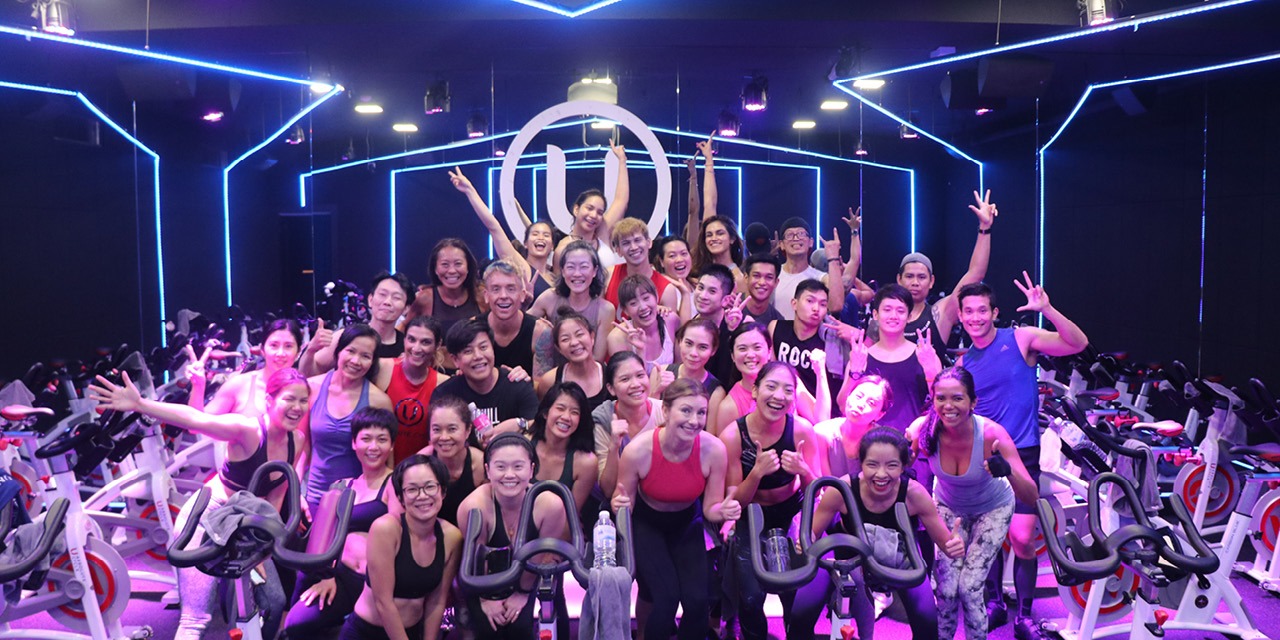
On the topic of verbal cueing, our instructors all have a framework within which they must work, and that includes specific vocabulary to use. Whatever class a member is in, whichever instructor is running it, they’ll say something and the member will immediately understand what they’re meant to do.
How would you describe the Absolute vibe?
We have an absolutely beautiful community with a real mix of people, where everyone fits in. All ages, all sizes, all fitness and confidence levels – they’re all there, smiling together. It’s really important to me that we create communities where nobody feels out of place.
OUR INSTRUCTORS ONLY WORK FOR ABSOLUTE YOU, EVEN IF THEY’RE FREELANCE. THEY’RE PART OF OUR BRAND.
That’s down to a lot of things, from our brand ambassadors to our instructors, who are great at what they do but – because they aren’t always the most ripped – allow members to think “they’re just like me”. It’s also about showing real people in our marketing and social media. We don’t always pick the fittest, most beautiful members to show in our ads. It isn’t about looking super-cool. We have teens, single mums, housewives, workers. We show real people who are enjoying themselves and feeling comfortable in their own skin.
What’s the secret of 18 years’ success?
Consistency is key – being consistently good at what you do – and you have to work really hard to sustain that over 18 years.
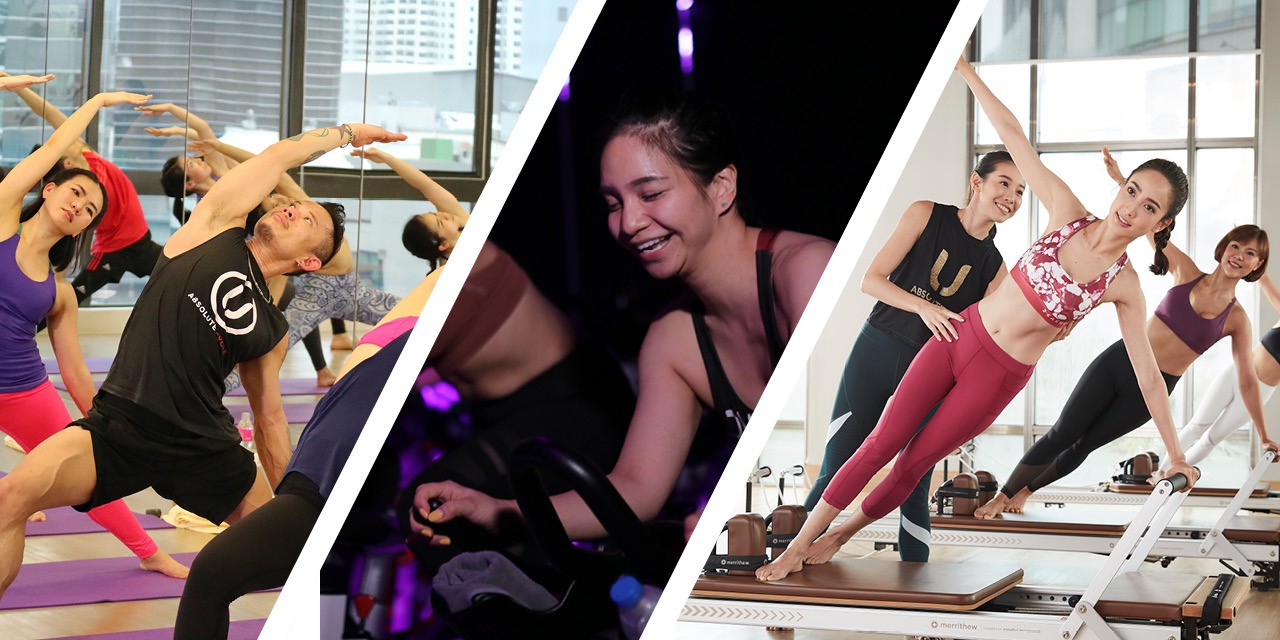
People are of course vital to that, so we have a really good instructor training system and, as previously mentioned, a framework and structure they must work within for every class. It’s also the case that our approximately 80 instructors only work for Absolute You. Even if they’re freelance, they don’t instruct anywhere else – they’re part of our team and our brand.
I think the other thing goes back to what I said before, about not rolling things out too quickly. Yes, people like variety in their exercise routines; it’s why many boutiques have quickly introduced new disciplines or else launched with multiple disciplines from the outset. But I don’t believe this works.
If people want a bit of everything, they’ll go to a big box gym. In the boutique world, people are looking for specialists: they want to go to the place that’s best at delivering the type of exercise they love the most.
RHYTHM CYCLING IS WHERE I SEE GROWTH FOR THE NEXT 5–10 YEARS. IT’S LIKE YOGA WAS 20 YEARS AGO.
That might sound a strange thing to say because of course, we’ve launched new disciplines under the Absolute You brand. But don’t forget, we’ve done that over a period of 18 years. In Bangkok, we started out with yoga and only moved on to offer something else when yoga was so established – with such a strong reputation and client base – that really, we didn’t need to talk about it any more. Everyone knew we were the best place to go. Only then did we launch pilates, and then another five or six years before we launched rhythm cycling.
On the other hand, look at our experience in Singapore, where we first launched a few years ago. Our clubs there offer all three disciplines, but it was too hard to build a market-leading reputation for all three at the same time. We had to choose a star discipline, and we chose rhythm cycling. It’s really only now we’re beginning to put some momentum behind pilates too. My advice: as a boutique studio, you have to become known for one thing at a time.
Let’s talk about COVID…
We were closed for three months last year, and another month at the beginning of this year. We have 15,000–20,000 active members, and most are on class packages – we sell anything up to 200-class packages – so our cash reserves have been OK. But it’s been tough.
During lockdown itself, we rolled out some online yoga content that we already had from a project we’d begun and shelved. We also sped up the launch of our Absolute You Home Edition bike and so far, we’ve sold around 300 bikes in packages that also include dumbbells and an exercise mat. Uptake has mostly been among existing members so far, with around 20 per cent sold to new customers.
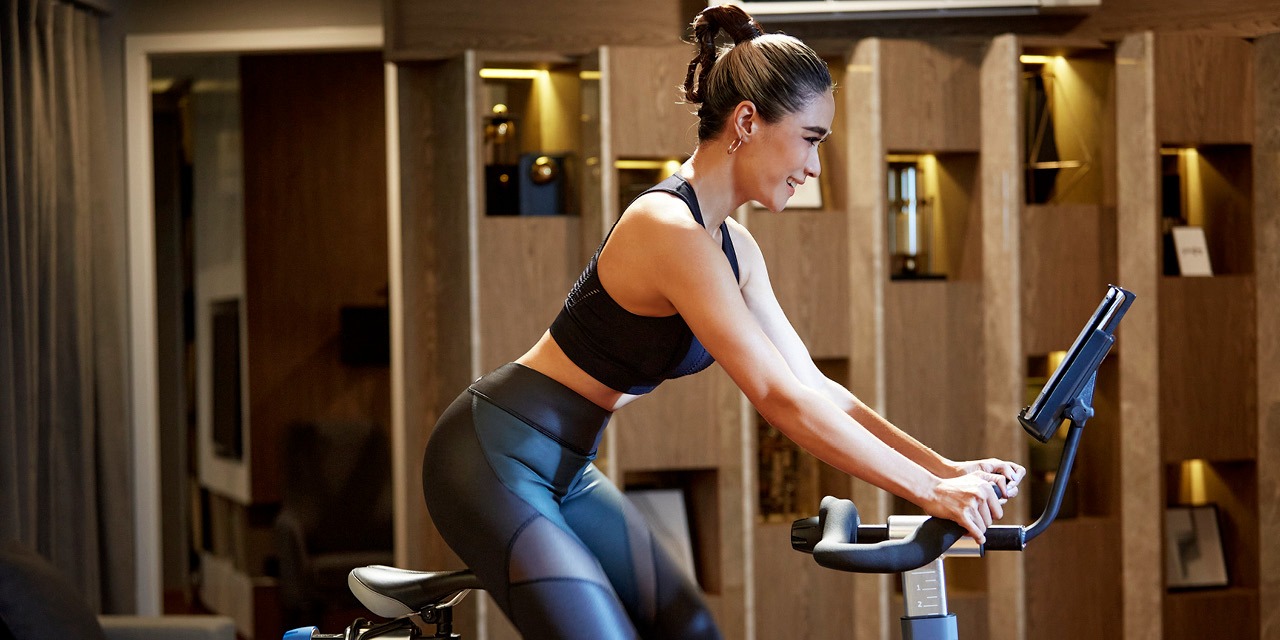
Our bike is priced around the same as Peloton, but our monthly subscription is currently higher at around US$70. We hope to get that down in time, but at the moment we simply don’t have the economies of scale to make it cheaper. People seem happy with the price point, though, because their whole family uses the bike and they can do as many classes as they like.
Our clubs are now open again, but we’re operating with capacity restrictions: we’re currently at about 90 per cent in pilates, but only around 65–70 per cent for cycling and yoga. [Editor’s note: information correct as at date of interview, 22 March 2021]
We haven’t been re-open for that long, but members are coming back. I think it’ll take another month or two to feel more like normal attendance, though, so we’re doing one of our unlimited membership packages – deals we only release now and then – to further encourage people.
Overall, though, I think we all have to be realistic in terms of what we can achieve this year.
How significant will Home Edition become?
For the member, I believe online will be a complement to the in-club experience, not a replacement. It does grow our reach to those who may not be able to get to a studio, though.
It also allows us to expand into whole new markets. We can film content in English using our instructors – in Bangkok and Singapore at the moment, but potentially also local talent from the new markets we expand into with Home Edition – and deliver a high-quality experience wherever people are.
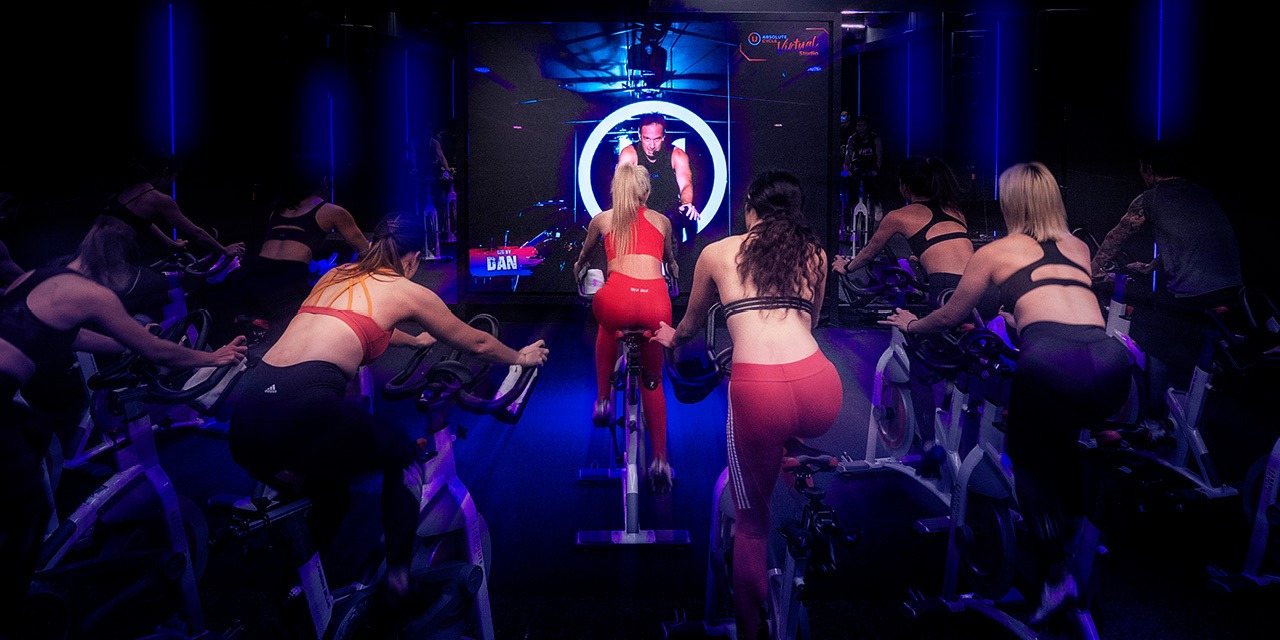
I would say we launched Home Edition without our usual level of finish: we normally only launch a product after we’ve really polished it, but COVID brought this one forward. So, there’s definitely more we want to do to develop it. Live streaming is coming soon, for example, and we want to do more on the community side of things too, building rider communities. And then just marketing it and really building our message around what it is.
But the content is already good, all filmed by us, and we have a strong brand. It’s also a high spec bike – developed in collaboration with Stages – and of course, Peloton isn’t currently available in Asia. In any case, the Asian market responds to a different style of coaching from the way they run classes in the US, with different vocabulary and a different style: more about fun, less about inspiration and soul searching. So, we have an opportunity to claim this space. We’re already in conversations with possible collaborators in Indonesia, and are eyeing up fairly rapid growth into Hong Kong, the Philippines and Malaysia too.
Are you doing anything new in-club?
We already had all this great rhythm cycling content from Home Edition – we’re filming around 20 classes a week – so we thought ‘why not use it elsewhere?’
With that in mind, we’ve just launched our first Absolute Cycle Virtual Studio, where there are no instructor-led classes, just scheduled virtual classes. The club is smaller footprint as it’s cycling only, and the studio feels like walking into a cinema: as you walk in, there’s a black wall and you have to turn right as you hit the wall to enter the studio, which has 30–40 bikes arranged over three tiers in front of a 4m x 3m screen. There’s great light and sound. It’s a fantastic experience.
We already had all this great rhythm cycling content from Home Edition, so we thought ‘why not use it elsewhere?’
Crucially, it provides us with a solution to the biggest challenge of all when it comes to rhythm cycling in Asia: the lack of good instructors. It will make it far easier to expand our rhythm cycling offering into new locations across Thailand and Singapore – and beyond.
What are your growth plans?
In terms of physical locations, we’re planning to build two or three studios in Bangkok this year and perhaps three in Singapore. In Bangkok, they will all be Absolute Cycling Virtual Studios – the market is already so saturated and so competitive – but there’s still room for growth in Singapore, so we’ll build probably two virtual studios and one normal studio there. All of this is subject to finding the right sites, of course.
I’d say the virtual studio product is about 90 per cent there now, so I think we’ll be ready to replicate it in a second site in around six months. All the sites we open this year will be owned by us, but longer-term – starting in 2022 – the goal is to franchise the virtual studio concept across south-east Asia. I think it could be a great franchise concept for smaller local studios, where we provide all the content and the owner really just needs to focus on operations and sales.
Why is cycling your focus for growth?
The virtual side of things – our virtual studios and Home Edition – are my babies for this year, and in the virtual studio space, the focus is definitely on rhythm cycling for now. In fact, even in our normal studios, cycling is the fastest-growing discipline.
Rhythm cycling has a genuinely broad appeal and relevance, with everyone from teens to those aged 50+ coming to it for a different reason. And yet it’s still new in Asia: a lot of people haven’t experienced it yet, and there’s still a low supply even in markets like Hong Kong. This is the untapped market and where I see the growth being for the next five to 10 years. It’s like yoga was 20 years ago.

Conceived, powered and funded by BODY BIKE®, RIDE HIGH has a simple mission: to celebrate and champion the very best of indoor cycling, sharing ideas, stories and experiences from around the world to inspire the sector on to even bigger and better things. Subscribe for free by leaving your details below and we'll send indoor cycling's hottest news direct to your inbox three times a year.



